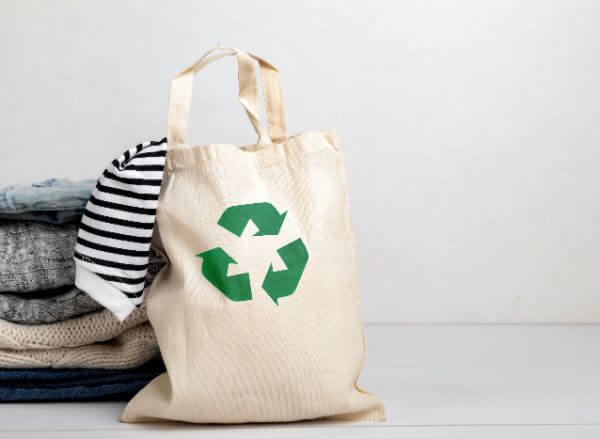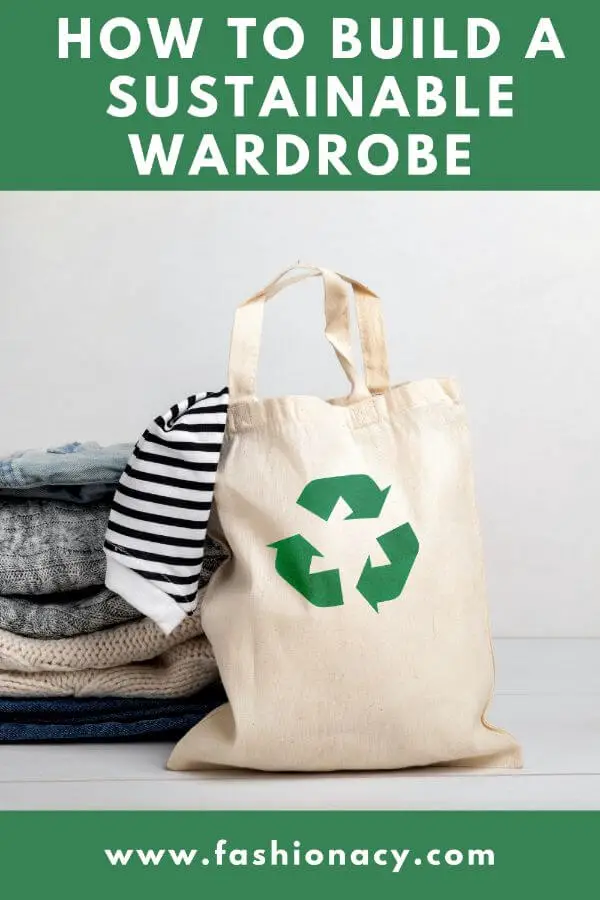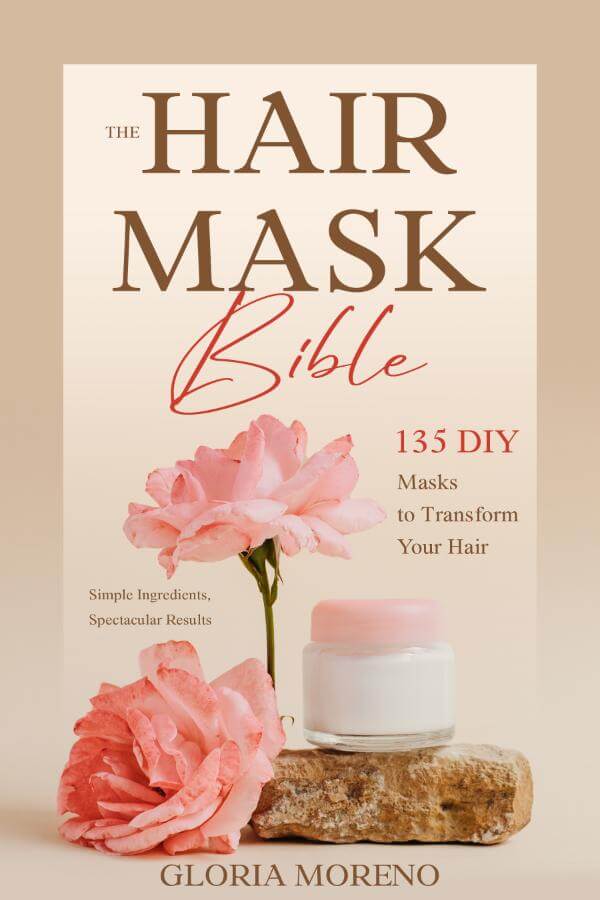
There are numerous reasons to build a sustainable wardrobe.
You’re reducing the fashion industry’s carbon footprint, advocating for fair labor standards and conditions, doing something great and ethical, and saving money in the long run.
That all sounds fantastic, but if this is the first time you’ve considered making your wardrobe more sustainable, you may be wondering how to do it.
The good news is that it’s not that difficult, and in this article, I’ll give you 10 pointers to help you create a sustainable wardrobe.
What is a Sustainable Wardrobe?
When we talk about a sustainable wardrobe, what exactly are we talking about?
A sustainable wardrobe is defined as any clothing that is made and utilized in an environmentally and socially responsible manner.
The fashion sustainability movement is a response to the fact that the fast fashion and fashion sectors are responsible for a slew of negative consequences, as we’ll discuss shortly.
One thing to understand when you consider building a sustainable wardrobe is that there is no such thing as 100 percent sustainability. Because even the most environmentally friendly businesses consume resources and have an impact on the environment and the people they serve.
However, by building a sustainable wardrobe, you can lessen that impact.
What is the Importance of a Sustainable Wardrobe?
Let’s speak about why having a sustainable wardrobe is vital, because it’s one thing to recommend sustainable shopping, but it’s quite another to fully understand the consequences.
Here are some basic facts and figures regarding the fast fashion business to help you understand why it’s so crucial.
- Fast fashion is responsible for up to 10% of all global carbon emissions, which is primarily due to shipping and production.
- Dyeing and treating fabrics is responsible for 20% of all waste water on the planet.
- Approximately 87 percent of fibers used in textile manufacture end up in landfills or are burnt, causing further pollution in the air.
- Polyester and microfibers are synthetic materials that are not biodegradable and wind up in the oceans, where they can last for decades.
Sustainable fashion exists to help reclaim control of the fashion industry and reduce its negative impacts.
Eco-friendly clothing, for example, is made from organic materials, unlike fast fashion brands.
These materials are renewable and produced in a way that is both safe for factory workers and the environment.
It’s fine if you already have non-sustainable clothing in your closet, but being conscious of the environmental and social impact of the clothes we buy and wear never hurts.
You may make to alleviate those issues by thinking about sustainability when you shop.
How to Build a Sustainable Wardrobe
So now the major question is: how can you create a sustainable wardrobe?
Here are ten pointers to get you started.
Plan and Organize
The first and most important tip is to organize and plan your wardrobe. The first step is to take a deep breath and take a step back.
Examine your current wardrobe and try to perceive your clothes in a fresh perspective. Examine the tags to determine how they were manufactured, what materials were used, and if any dyes were utilized.
When you’re done, consider what impact those clothes might have on the environment. Some of the pieces you currently own, such as those made of organic cotton or wool, may be semi-sustainable.
Others may have been obtained and produced closer to home, resulting in a lower carbon impact.
The idea here isn’t to figure out what’s wrong with your wardrobe and get rid of it. It’s to find out what you have and where you can improve as you begin to add to your wardrobe with the goal of building a more sustainable wardrobe.
Get Rid of Unused Excess
The second tip is to deal with any extra that isn’t being used.
Many people have clothing in their closet from a long lot ago that no longer fit or aren’t in their current style.
If this describes you, there’s a good chance you have clothes in your closet that you don’t wear anymore.
The first thing that comes to mind is getting rid of them. While getting rid of them may seem like a good thing, make sure you do it in an environmentally friendly way. Because if you don’t, that shirt or pair of Levi’s trousers might as well end up in a landfill.
If your clothes are still in good condition, rather than tossing them in the trash, which is very easy to do, see if anyone you know might be interested in taking them off your hands.
If not, consider donating them to a local thrift store, such as the Salvation Army, Goodwill, or another.
Because recycling and reusing items is an important aspect of promoting sustainable fashion and sustainability in general.
If you’re not sure if you’re ready to get rid of anything, put it away for a few weeks and then donate it if you haven’t worn it or even thought about it.
Remember that the idea is to make the most of what you have, recycle what you don’t need, and cut down on waste.
Repair Items That Have Been Damaged
The third tip is to fix and restore worn items.
Even the best-made and highest-quality garments will not last indefinitely, no matter how well you care for them.
If you know how to use a sewing machine or a needle and thread. Some of these fixes are simple enough to handle on your own. Otherwise, contact a tailor to fix the clothing if necessary.
Now, if something you adore is beyond repair, don’t throw it away right away. Consider recycling it into something more useful or ornamental instead.
You might be able to use sections of the garment to make a dog toy or convert it to rags, depending on the garment.
Consider donating it to a local animal shelter if it’s really worn out. Many shelters will accept old, useless clothing and blankets because they make excellent animal bedding.
Reconsider & Investigate
The fourth tip is to reconsider your shopping habits and conduct thorough research on brands.
Consider what you’ll need and where it’ll come from the next time you go shopping for clothes.
Many people shop on the spur of the lot and buy items to add to their wardrobe. However, this is not the most environmentally sustainable way to shop.
Instead, strive to have a good notion of what would suit your style and help you make your wardrobe.
Once you’ve decided what you require, look into ethical clothing brands that provide those items. Examine how they obtain their materials and whether or not their employees have appropriate working conditions and pay.
If a brand mentions locally sourced and produced on its labels or website, you know you’re getting a decent product.
Another alternative is to go with brands who specialize in made-to-measure clothing, which usually means less waste and no overproduction.
Purchase Custom-Made Clothing
Purchase custom-made clothing is the fifth tip.
There are various advantages to purchasing bespoke or made-to-measure clothing, especially when compared to shopping at a big-box store or a fast-fashion label.
For one reason, unlike many quick fashion brands, custom-made clothing does not suffer from the same problem of overproduction.
You may build a sustainable wardrobe that suits your preferences and fits exactly the way you want it to without contributing to additional waste by having custom tailored clothing made for you.
Suits, coats, shirts, outerwear, knitwear, shoes, and accessories are all available from a variety of made to measure retailers.
Because these garments aren’t mass-produced, you can rest confident that each one is handcrafted with the highest quality materials and a focus on style and durability.
Wardrobe as Investment
The sixth piece of advice is to think of your wardrobe as an investment.
When we talk about a long-lasting wardrobe, we’re referring to one that is made to last.
Consider each thing you’re considering as an investment every time you go shopping for new clothes. Sustainable and environmentally friendly clothing can be more expensive than regular clothing, but the trade-off is that it will last considerably longer.
It has a substantially lower cost per wear ratio as a result, which means it pays for itself over time and multiple times.
Think Outside the Box
Think outside the box is tip number seven.
There are a few wardrobe staples that you must have. But that doesn’t rule out the possibility of becoming inventive with it.
Because keeping an open mind while shopping is one way to construct a sustainable wardrobe.
You already know how adaptable those essentials and staples may be if you have them in your closet. But if you add a couple of standout pieces to the mix, you can make it even bigger.
Take Good Care of Your Clothes
Take care of your clothes, which is tip number eight.
One way to build a sustainable wardrobe is to focus on quality, fabric, and construction, but this isn’t the only factor to consider.
It’s convenient to throw dirty clothes in the washer and dryer, but it’s not always a good idea.
Most clothes come with precise cleaning instructions, and some even recommend washing them by themselves, air drying them, or using a low-temperature tumble dryer.
While you’re at it, try to use non-toxic or plant-based detergents because they’re better for the environment.
Dry washing your suits and sport coats should be done sparingly and only when absolutely necessary.
It may seem like an extra step now, but correctly caring for your clothes will ensure that they last much longer.
Avoid & Buy Specific Fabrics
The ninth tip is to avoid and buy certain fabrics.
Natural or organic materials such as hemp, cotton, and wool should make up the majority of an eco-friendly or sustainable wardrobe.
These fabrics are superior to synthetics since they decompose naturally and compost without harming the environment.
Furthermore, certain plastics can leach dangerous compounds into the air, resulting in increased pollution. Check to see if your clothes have any dyes on them. Environmentally friendly dyes are fine, but there are a lot of harmful dyes out there as well.
Some clothing brands claim that their items are environmentally friendly without taking the manufacturing method or dies used. So do your research.
Look for official organic certifications, such as OEKO-TEX 100, while building a sustainable wardrobe to ensure that your clothes are truly eco-friendly.
Vintage Clothing
The tenth tip is to shop vintage.
At estate sales, thrift stores, and even online, you can find an incredible variety of unusual styles, designs, and brands. eBay is a fantastic resource for this.
Plus, since you’re basically recycling something that already exists, it’s a win-win situation. You’re advocating environmental stewardship.
It’s important to remember that shopping vintage doesn’t have to mean sacrificing quality. In fact, because they’ve been there for so long, many vintage things are of greater quality. And with appropriate care, they’ll probably live a lot longer.
Conclusion
More brands than ever before have turned their focus to sustainable clothing sourcing, design, production, and distribution.
Building a sustainable menswear wardrobe can be simple once you know what to look for and what to avoid.
When you shop sustainably, you can benefit the environment while also supporting fair labor standards, safe working conditions, and reducing waste.
It only takes that first step.



